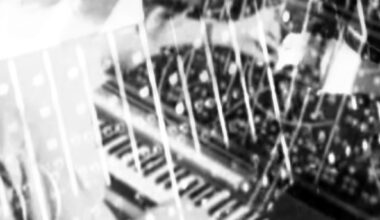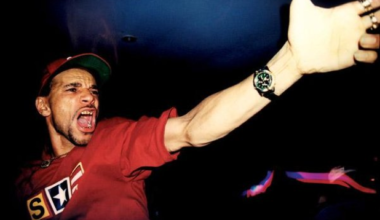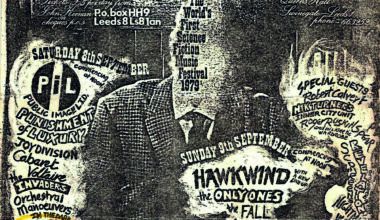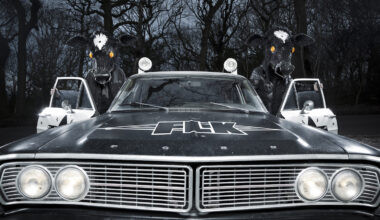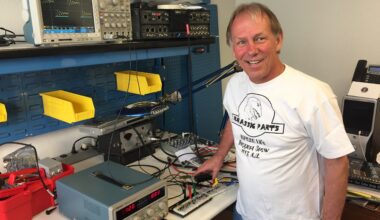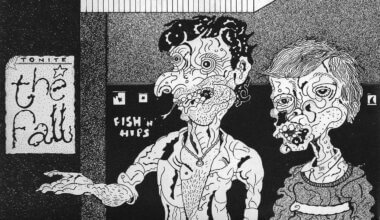In January 1984, German experimental noise pioneers Einstürzende Neubauten performed the Concerto For Voice And Machinery in all its spontaneous glory at the ICA in London. Art? Or demolition?
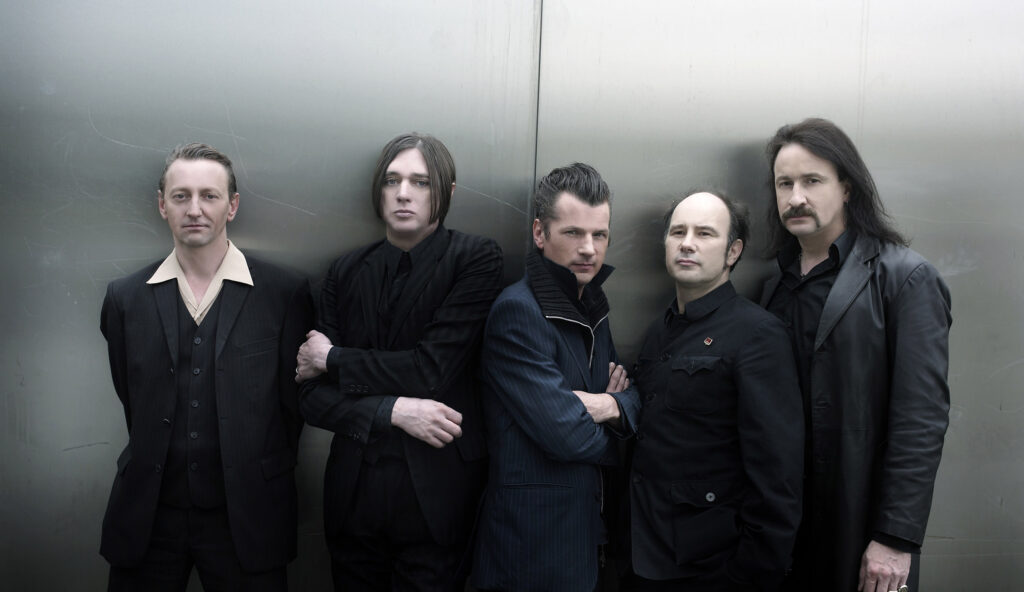
The Concerto For Voice And Machinery was held at London’s prestigious ICA (Institute Of Contemporary Arts) on 3 January 1984. That night, Einstürzende Neubauten were joined onstage by Genesis P-Orridge of Throbbing Gristle and Frank “Fad Gadget” Tovey. Most memorably, however, the venue itself became part of the performance.
During the event, various power tools were employed to drill into the walls and floor, a circular saw was used to destroy a metal railing and bricks were thrown into a cement mixer. Before long, the stage had become engulfed in wood chips, flying sparks and clouds of dust, while the room filled with acrid smoke and the smell of burning. The show finally stopped after 25 minutes, with panicked ICA staff barking instructions and requests into walkie-talkies. It was at this point that ticket holders who’d paid £12 to get in proceeded to start a riot and try to destroy the stage.
As the band’s Alexander Hacke told me in 2007 – just before the artist Jo Mitchell recreated the infamous event at the same venue – Einstürzende Neubauten had been banned from various venues already, after mounting similar assaults on their surroundings. They were barred (and as far as I know, still are) from The Warehouse in Leeds after a show on 18 August 1983 saw them taking power drills to the rear wall. However, the Concerto For Voice And Machinery was on a different level entirely.
“We had this utopian idea of leaving the stage from underneath,” Hacke explained. “The plan was to dig through the stage into the tunnel system underneath the venue, which is supposed to go all the way to Buckingham Palace. Obviously, the venue had no idea of our intentions.”
Hacke recalled Concerto For Voice And Machinery being the culmination of the band’s mission to create sounds that had “no connection to rock music”, and the ICA billing it as a “highbrow art thing”.
After forming in West Berlin in 1980, Einstürzende Neubauten had moved quickly from more conventional electronics to using custom-built instruments, often made out of scrap metal and building tools. This led the British music press to dub them, along with kindred spirits such as the British band Test Department, as “metal bashers”. By 1984, anything they could lay their hands on might become part of the performance. At that time, the venue – whose management may not have been aware of the earlier controversies – had no idea what the band were planning.
“I think the ICA probably started to realise something was afoot when a cement mixer was set up onstage alongside electric drills and jackhammers,” Hacke recalled. “There was a piano too, but that would be smashed to pieces. In those days, we’d often take the stage under the influence of substances or alcohol. But this time, I think we were particularly aware of the potential for danger so we were pretty much straight. When we went onstage, the euphoria was so intense. It felt ritualistic, meditative, like we were Samurai.”
To this day, there’s controversy over who performed that night. Marc Almond’s supposed appearance seems to be an urban myth. Hacke confirmed that despite differing versions, Blixa Bargeld (the band’s singer and founder member of Nick Cave And The Bad Seeds) did perform, but only towards the end, singing a solitary word, “Sehnsucht”, which means “addicted to desire”.
Frank Tovey sang what he described as “Om-like mantras”, and Hacke couldn’t remember whether Genesis P-Orridge was handling a chainsaw or a pneumatic drill, but did recall the whole room being filled with smoke and the stench of petrol everywhere.
“It sounded like a cross between a building site and war,” he claimed.
Because he was still a teenager at the time, the other members wouldn’t let him near the heavier machinery.
“I stood, wearing protective gloves and a visor, throwing milk bottles into the cement mixer, which smashed and flew into the crowd.”
Scant health and safety back in those days.
“But we would have kept it pretty straightforward if we weren’t inspired by the reaction of the audience. There’s a famous Walter Benjamin essay about the destructive character, and he says, ‘The destructive character knows only one watchword – make room. And only one activity – clearing away’. And that’s how it was. We were thinking, ‘Actually, it’s not us doing anything. The audience are tearing the place apart!’.
People were fighting over the drills and sledgehammers. Cables and machinery were pulled into the audience.”
Hacke claimed to have realised something long after the event, though.
“The thing about these situations is that no matter how wild it gets, people do instinctively take care of each other. I’m sure there were moments when we thought it was getting out of hand, but it was all so quick. It went ‘snap’, like a switch being flicked and everyone going berserk.”
Once Hacke had run out of milk bottles, he left the stage and wandered into the crowd.
“Heated discussions were going on between officials at the entrance,” he said of what he witnessed. “They couldn’t really throw themselves into the fray. It was hopeless. After 21 minutes they pulled the power. It was the only thing they could do. But the audience just carried on banging things.”
By the end, there was a big hole in the stage, but to Hacke’s eternal regret Neubauten’s drilling didn’t make it through to the actual stone structure of the building.
“So we failed.”
Still, the concert has become a legendary piece of history and is still talked about online, where someone who was there on the night remembers being “hit by a piece of concrete”, and another claims to have heard it called “the best gig since the crucifixion”.
Back in 2007, Hacke had high hopes for the recreation ahead of the performance of the Concerto For Voice And Machinery II.
“I hope this time they actually make it down the tunnels and pop in to see the Queen.”
